Results: Marine-Related Winners of Wildlife Photographer of the Year 2021
Results: Wildlife Photographer of the Year 2021
Winner, Underwater and Wildlife Photographer of the Year
Creation by Laurent Ballesta, France
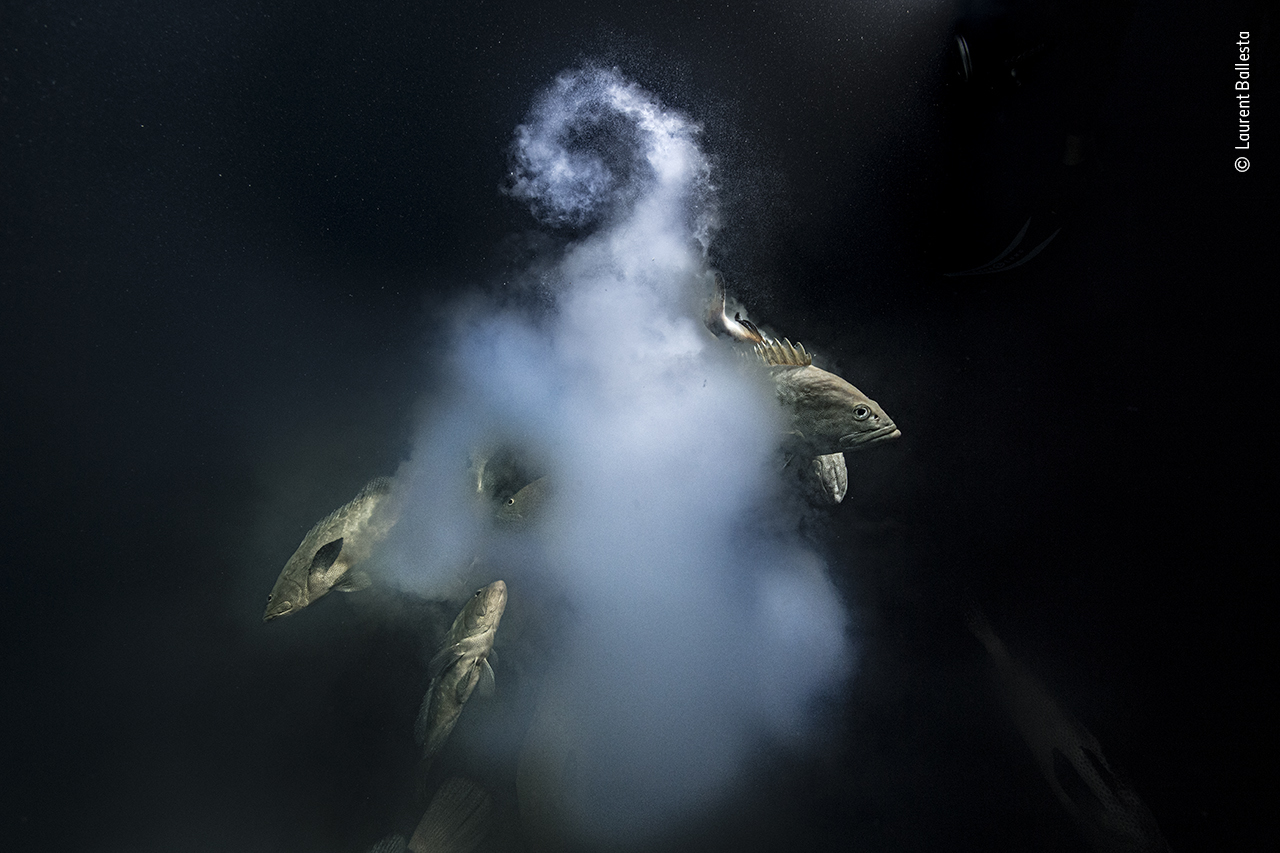
For five years Laurent and his team returned to this lagoon, diving day and night to see the annual spawning of camouflage groupers. They were joined after dark by reef sharks hunting the fish.
Spawning happens around the full moon in July, when up to 20,000 fish gather in Fakarava in a narrow southern channel linking the lagoon with the ocean. Overfishing threatens this species, but here the fish are protected within a biosphere reserve.
Nikon D5 + 17–35mm f2.8 lens at 17mm 1/200 sec at f11 ISO 1600 Seacam housing Seacam strobes1/200 sec at f11 ISO 1600 Seacam housing Seacam strobes.
Winner, Natural Artistry
Bedazzled by Alex Mustard, UK
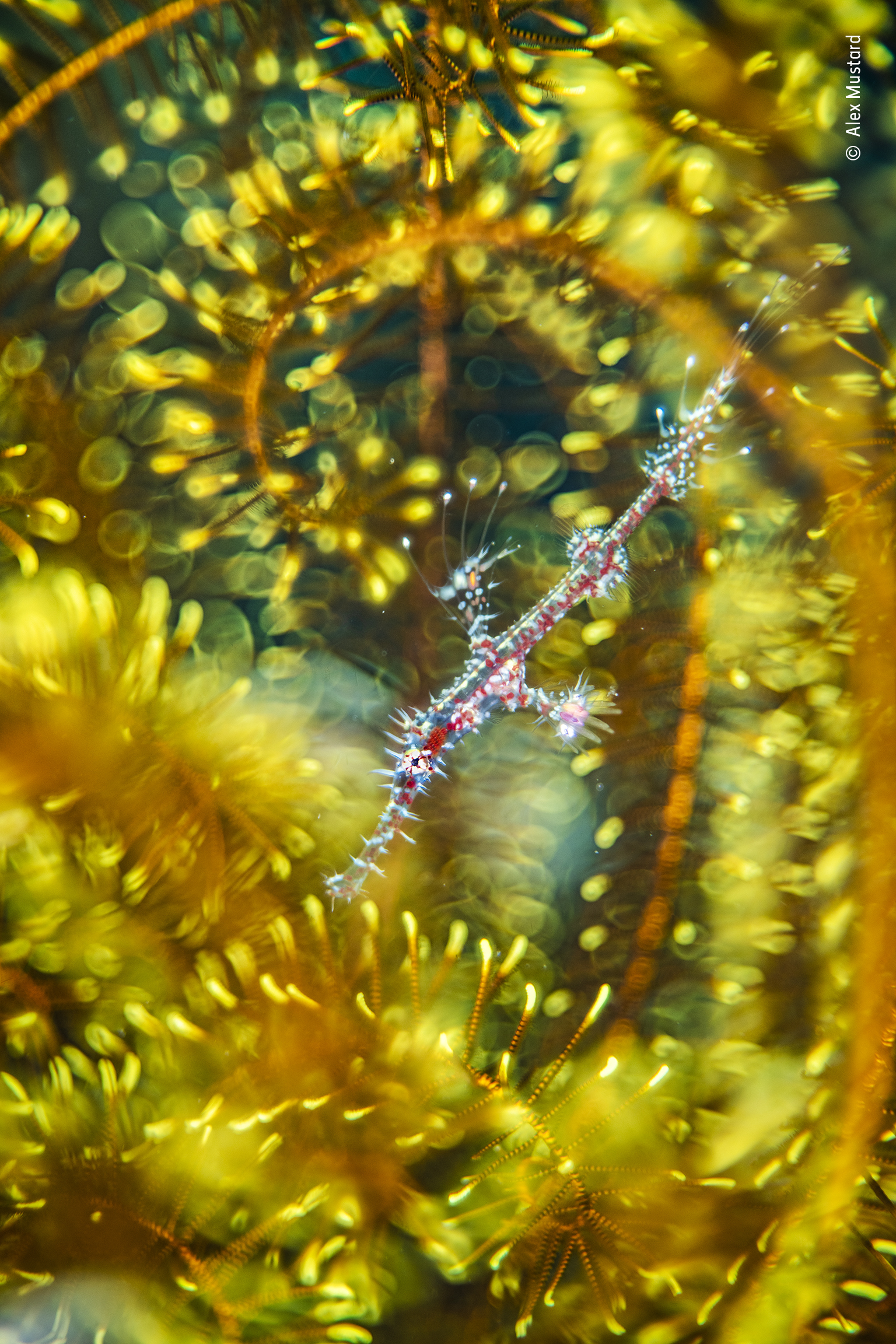
Alex had always wanted to capture this image of a juvenile ghost pipefish but usually only found darker adults on matching feather stars. His image conveys the confusion a predator would likely face when encountering this kaleidoscope of color and pattern.
The juvenile’s loud colors signify that it landed on the coral reef in the past 24 hours. In a day or two, its color pattern will change, enabling it to blend in with the feather star.
Nikon D850 + Trioplan 100mm f2.8 lens 12mm extension tube ND8 filter FIT +5 close-up lens 1/250 sec at f2.8 ISO 80 Subal housing two Retra strobes.
Winner, Oceans: The Bigger Picture
Nursery meltdown by Jennifer Hayes, USA
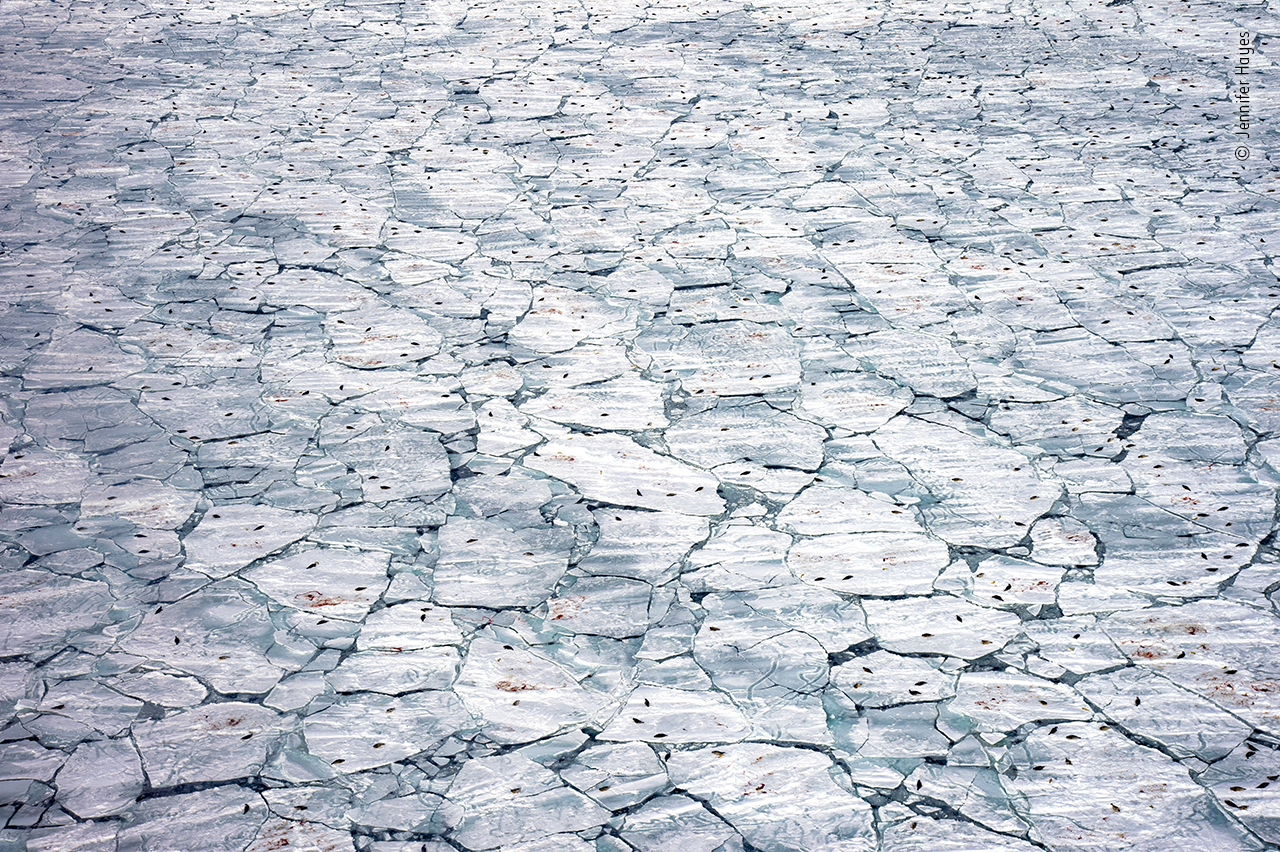
Following a storm, it took hours of searching by helicopter to find this fractured sea ice used as a birthing platform by harp seals. ‘It was a pulse of life that took your breath away,’ says Jennifer.
Every autumn, harp seals migrate south from the Arctic to their breeding grounds, delaying births until the sea ice forms. Seals depend on the ice, which means that future population numbers are likely to be affected by climate change.
Nikon D4 + 24–120mm f4 lens 1/640 sec at f9 ISO 200.
Winner, Portfolio Award
Face-off, from Cichlids of Planet Tanganyika by Angel Fitor, Spain
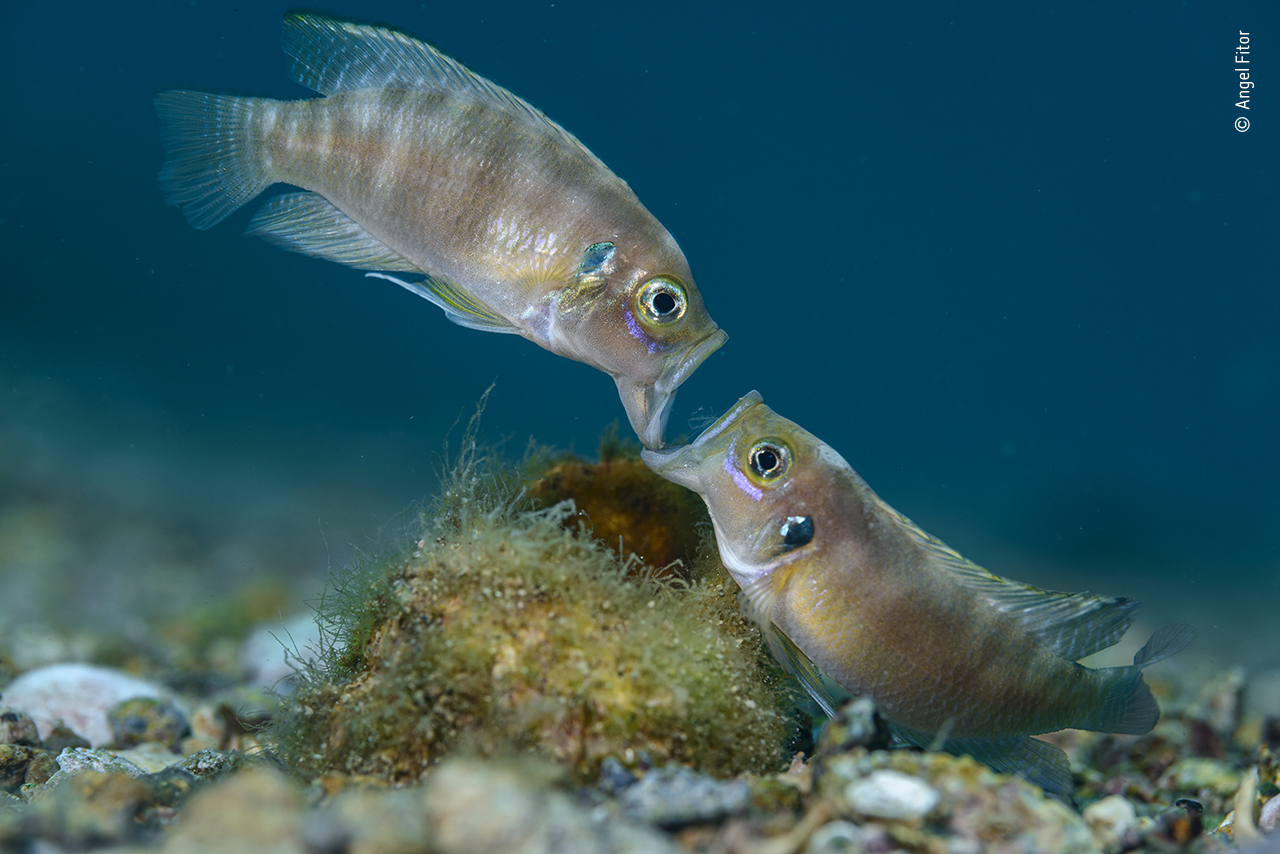
Two male cichlid fish fight jaw to jaw over a snail shell. Inside the half-buried shell is a female ready to lay eggs. For three weeks Angel monitored the lake bed looking for such disputes. The biting and pushing last until the weaker fish gives way. This struggle was over in seconds but lasted just long enough for Angel to get his winning shot.
Nikon D800 + Sigma APO Macro 150mm f2.8 lens; 1/200 at f9; ISO 200; Anthis Nexus housing; Retra strobes
Lake Tanganyika, the oldest of the East African Great Lakes, is home to more than 240 species of cichlid fishes. Each has a unique body shape, size, and behavior to fill every kind of ecological niche. But despite teeming with life, this incredible ecosystem is under threat. Angel has worked on cichlids for two decades, braving difficult diving conditions to photograph their behavior. Recently, chemical runoff from agriculture, sewage, and over-exploitation by the unregulated ornamental fish trade has driven some cichlid populations towards extinction.
Winner, Plants, and Fungi
Rich reflections by Justin Gilligan, Australia
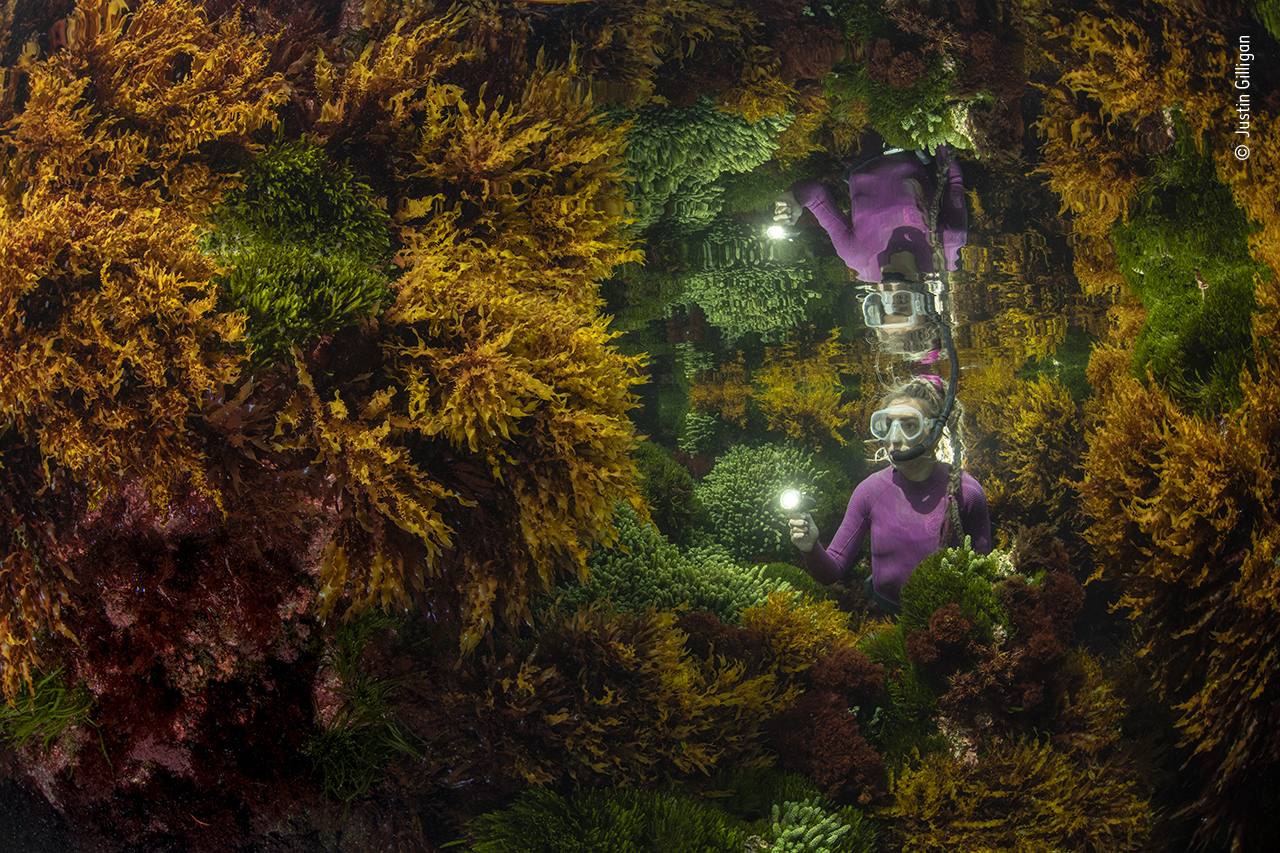
At the world’s southernmost tropical reef, Justin wanted to show how careful human management helps preserve this vibrant seaweed jungle. With only a 40-minute window where tide conditions were right, it took three days of trial and error before Justin got his image.
Impacts of climate change, such as increasing water temperature, are affecting the reefs at an ever-increasing rate. Seaweed forests support hundreds of species, capture carbon, produce oxygen, and help protect shorelines.
Nikon D850 + Sigma 15mm f2.8 lens 1/160 sec at f13 ISO 400 Nauticam housing twin Ikelite DS161 strobes + sync cord.
Winner, Behaviour: Amphibians and Reptiles
Where the giant newts breed by João Rodrigues, Portugal
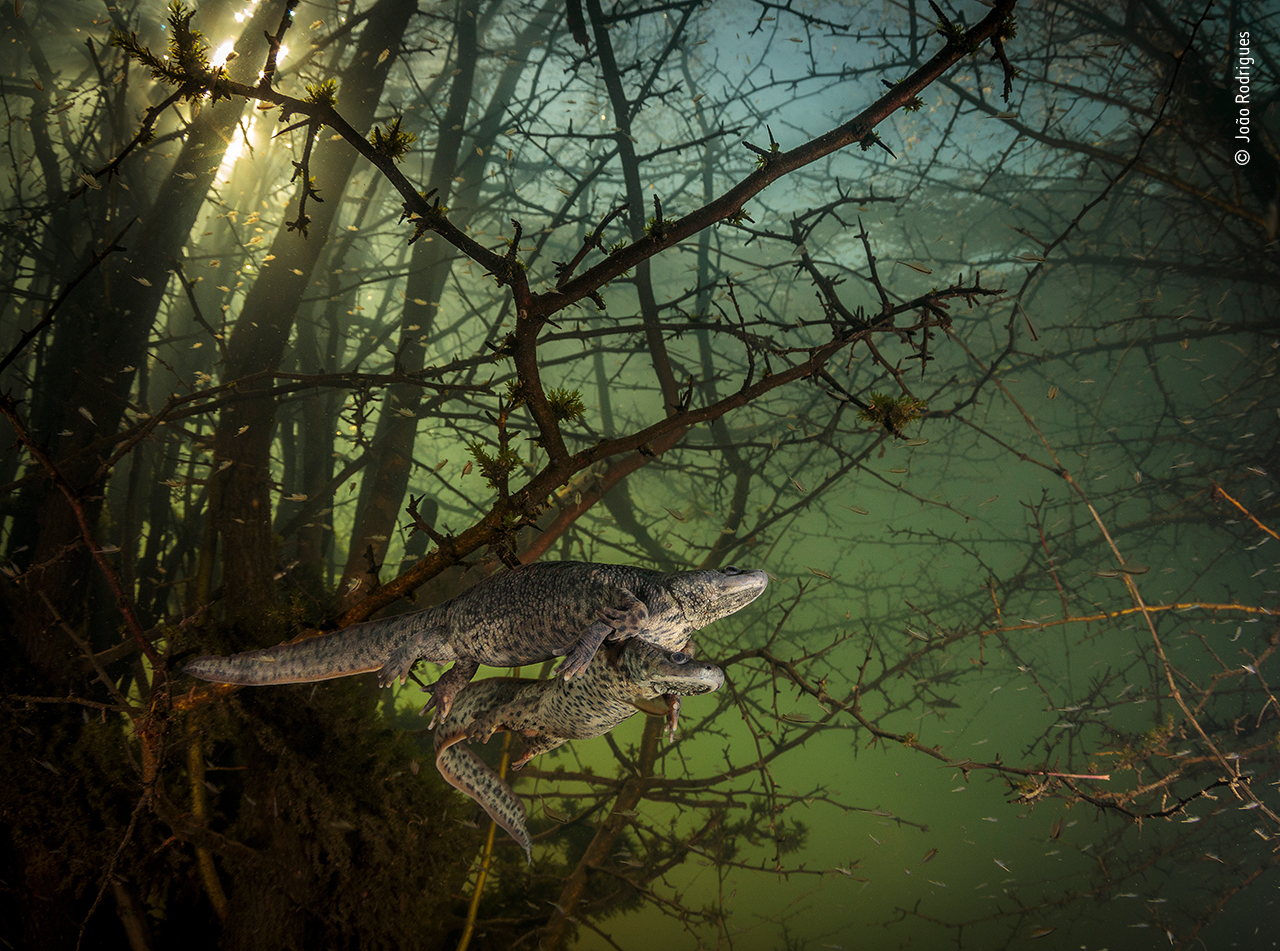
It was João’s first chance in five years to dive in this lake as it only emerges in winters of exceptionally heavy rainfall when underground rivers overflow. He had a split second to adjust his camera settings before the newts swam away.
Found on the Iberian Peninsula and in northern Morocco, sharp-ribbed newts (or salamanders) are named after their defense strategy. They use their pointed ribs as weapons, piercing through their own skin and picking up poisonous secretions, then jabbing them into an attacker.
Canon EOS 5D Mark IV + Tokina 10–17mm f3.5–4.5 lens at 16mm 1/200 sec at f13 ISO 320 Aquatica housing two INON Z-330 flashes.
Winner, Rising Star Portfolio Award
Cool time, from Land time for sea bears by Martin Gregus, Canada / Slovakia
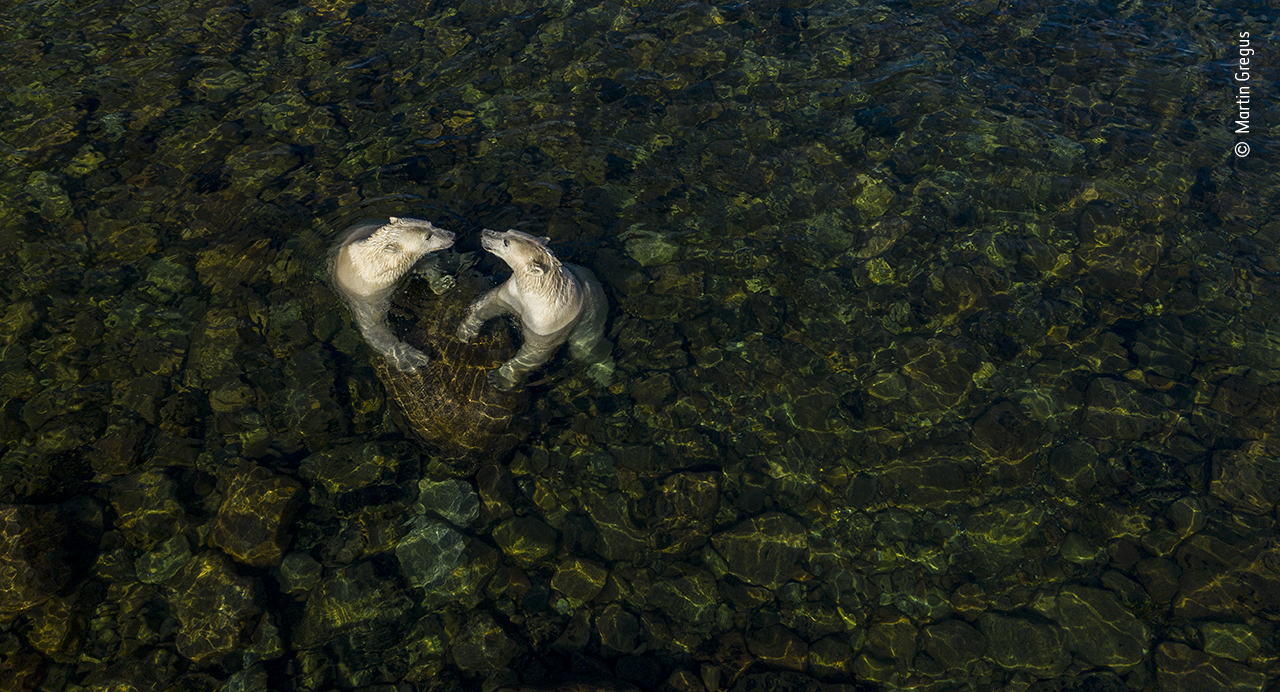
On a hot summer’s day, two female polar bears took to the shallow intertidal waters to cool off and play. Martin used a drone to capture this moment. For him, the heart shape symbolizes the apparent sibling affection between them and ‘the love we as people owe to the natural world’.
DJI Mavic 2 Pro + Hasselblad L1D-20c + 28mm f2.8 lens; 1/400 sec at f3.2; ISO 100.
Martin spent three weeks on his boat using various techniques to photograph polar bears around Hudson Bay. Polar bears are mostly solitary and, while living on sea ice, can be dispersed over vast areas. Coming ashore in summer, they live mainly off their fat reserves and, with less pressure to find food, become much more sociable. While not wanting to detract from their plight in the face of climate change, Martin wanted to show polar bears in a different light.